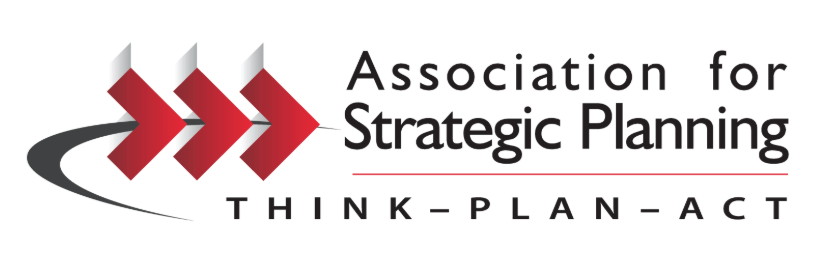Strategic management has many nagging questions that, to my knowledge, have no definitive answers that are true or useful all of the time. I know you might say I am setting up a straw man here in that the phrase “true and useful all of the time” sets a very high, almost impossible bar. More on this below.
There are in fact more unanswered questions than answered ones. This is in part due to the fact that competitive strategy is a “messy” problem. It is not that all the questions will remain unanswered. New research or cumulative experience could provide answers one day.

This article will discuss seven of the most challenging questions that I have dealt with in firms over the last thirty years simply as examples that shed light on the purpose of this article. And that is why there are so many answers to the questions for the field of strategy conditioned with “it all depends on the context” or “it all depends on the nature of industry maturity”, “it all depends on who the current CEO is”, etc. I thought we would have had clear guidance by now, so it is surprising to me that these remain perennial problems. On the other hand, as Ralph Waldo Emerson said, “A foolish consistency is the hobgoblin of little minds….”. So you might say “Bigler get over it.” Or you might think we will always have to live with the approximate or “good enough under these conditions” in strategy concerns. But maybe not…
Long time practitioners in the field of strategic management, whether in firms or as outside resources, will also recognize these questions upon reflection of their work I think. The answers to these questions, even “good enough” answers, taken by firms in their strategy making efforts can critically influence the success of formulated competitive strategies and overall firm performance. And as readers of this column know by performance I mean growth in the valuation of the for-profit firm as the key outcome measure. But wouldn’t be nice to have more definitive knowledge on which to base key decisions?
Why have these and other questions remained unanswered? As I have stated in this series of article several times, my view is the field of strategic management does not have a definitive, universally agreed to body of knowledge (BOK) with proven causal laws. The Association for Strategic Planning does have a good BOK, but it is not universally agreed to nor does it have proven causal laws of what creates performance, or at least postulated laws. But proof of causality as I have implied above is absent from all strategy bodies of knowledge or frameworks I am aware of and thus I am not being critical of ASP’s BOK. Thus most everything is relational and not absolute. That is, “our strategy is twice as good as Competitor X’s strategy on the following dimensions, but we don’t know if either of us is absolutely correct so we will do the best we can”.

Therefore the seven unanswered questions we will discuss do not have, according to my knowledge, definitive evidence behind them to assert one answer is better or more useful than other answers in all cases. If we did, we would have a set of principles that could be followed in new situations. The field may never have this luxury though as a universally agreed to body of knowledge looks like it will never happen (for another discussion).
We are not talking here about the trivial differences in answers to questions about what is a goal versus an objective. Nor are we talking even about the differences in definitions of a vision or mission statement, as important as many folks feel these definitions are. These can be important sometimes. But in my view, the practitioner simply defines her/his version of a definition, gains agreement among those who will work together on those definitions and then starts working. There is no need to spend any more valuable time or brainpower on these kinds of questions in my view.
And while they may not have been directly included in the agenda for a strategic planning retreat or ongoing strategy review meetings, these seven questions (remember these serve as examples of many questions) and appropriate, useful answers lie underneath such familiar topics as SWOT, Five Forces, Value Chain, Business Models, Operating Models, Value Propositions, etc. I think because these questions have gone unanswered in the way people want them answered for so long, they have faded into the background. And in doing so many people do not realize their power to influence or even cause our behaviors.
The punch line for this article is that each firm must decide where it stands via their seven answers for the seven questions and move on the best they can. These can serve as examples of answers to myriad other strategy questions you and others must assuredly have. Part 1 of this article will cover questions 1-3 outlined below and Part 2 will cover questions 4-7.
Here are the seven questions that I will ask you to ponder over the two Parts of this article:
Question #1: Are Firms’ Behaviors and Actions “Determined” By Their External Environments? Determinism vs. “Free Will”?
Question #2: Is There A Natural Pace of Business In Those External Environments That Cannot Be Violated? Cheetah or Turtle?
Question #3: Should Firms Dominate Something or Be Diversified to Contribute to Growing the Valuation of the Firm? 500-Pound Gorilla or Hummingbird?
Question #4: Where Should A Firm’s (Within A Group of Firms) Differentiation Play Out to Contribute to Growing the Valuation of the Firm? Totally Unique and Distant From the Group or Closely Aligned With the Group?
Question #5: Can We Know the Future As Well As We Know the Present and the Past? No Field of Vision Into the Future or Clear Field of Vision Into the Future
Question #6: When New Unstoppable Trends Are First Observed, Does Our Firm Change First, Forcefully and All At Once or Wait and Change Piecemeal? A Charging Rhinoceros or Turtle?
Question #7: Why Is The Required Rate of Return (Weighted Average Cost of Capital) Set In Stone? First-Principle Of Capitalism or A Negotiated, Persuasive Reality Allows A Variety of Required Return Rates?
As you will see, answers to these seven questions are interrelated. That is, an answer to one question could influence an answer to another question.
Question #1: Are Firms’ Behaviors and Actions “Determined” By Their External Environments? Determinism vs. “Free Will?

I began writing this now two-part article several months ago. Since the start of writing, I was made aware of an extremely good 2017 book titled Patterns of Strategy by Patrick Hoverstadt and Lucy Loh. This book adds great insight to this question and Question #2 (other of the questions as well) and is much appreciated.
Many firms think their actions and behaviors are totally of their own choosing. Question #1 challenges this notion. I paraphrase from Warren Buffett: “Show me a problematic industry and a smart executive and the problematic industry will almost always win out”. My doctoral dissertation of 1982 was titled Environment – Strategy – and Performance: An Empirical Analysis in Two Service Industries. There I showed conclusively that the attractiveness of the external environment of the parish (county) in Louisiana, in which 64 banks and 54 savings and loans competed very much influenced bank profitability measured by a standard measure of Return on Assets (ROA) no matter what their competitive strategies were. In addition, even in an attractive parish banks outperformed savings and loans on ROA due to what I called the Market Power Position of the banks in those attractive parishes. Again it was not just an individual bank’s strategy that determined its performance. Something more collective was going on.
And of course most strategy professionals know of the work of Dr. Michael Porter. Introduced some forty years ago, he showed through data and evidence that the configuration of five forces of industry structure “determine” about 60% of the Return on Invested Capital (ROIC) in each industry. This is the reason the pharmaceutical industry enjoys an average of 44% ROIC and the steel industry 5% ROIC. Firms can postulate their individual strategies and execute them as part of the explanation for the industry average ROIC, but the industry itself explains or determines 60%.
Still in 2019, many firms think they have the freedom to formulate their strategies divorced from the effects of their industries or competitive space. (For me a competitive space is a mixture of two or more formally distinct industries. For example “infotainment” is a space composed of entertainment and information). I think the digital nature of many industries or spaces today is fueling this belief that anything is possible. Think It, Act It and Be Successful could be the mantra. Question #1 is a constant reminder that this view could be foolhardy.
Question #2: Is There A Natural Pace of Business In Those External Environments That Cannot Be Violated? Cheetah or Turtle?

We have all heard the sentence “Well that product or service was just ahead of its time. Maybe it could work later”.
In my 2004 book The New Science of Strategy Execution: How Established Firms Become Fast, Sleek Wealth Creators, I presented the notion of “market rhythm”. For me it was the natural pace of competition in an industry or space but it is calculated firm by firm. Market Rhythm is about 4 to 5 times faster than how often a firm’s best customers buy their products or services. My prescription for my clients is your Executive, Operating and Support processes need to be PALS with your market rhythm. For Neiman Marcus, the upscale retailer in 1998, their market rhythm was about every four or five days, as their best customers bought about once a month. PALS with market rhythm means there is a drumbeat of action and results at the market rhythm pace. My focus has been on the strategic initiatives approved by a strategy process. For the three kinds of processes to be PALS with the market rhythm an initiative has to be completed, critical information gained, or disconfirming evidence captured at the market rhythm pace. Disconfirming evidence is stuff that makes us uncomfortable with our own mental models of the world and takes leadership courage to seek out. This helps to create fast, sleek firms who can challenge their own dogma at the market rhythm pace.
But this question asks the follow on question: Can we become too fast for the natural pace of a competitive space or industry? My answer is yes. This means we have overshot our process capability. I used to think speed at all costs was good. This question tempers this assertion. And Peter Hoverstadt and Lucy Loh present interesting findings on when being slower in certain dimensions or elements is a good thing. Wow, what is the definitive answer to the question?
Question #3: Should Firms Dominate Something or Be Diverse to Contribute to Growing the Valuation of the Firm? 500-Pound Gorilla or Hummingbird?
Stuart Jackson of the consulting firm LEK published in 2007 a very good book titled Where Value Hides. They uncovered a metric called Strategic Market Position (SMP). Their correlations of higher SMP measures with increases in Total Shareholder Return (TSR) are amazing. Higher SMP measures happen when a firm concentrates its offerings. It is calculated thusly:
Percentage of a Firm’s Revenue By Product x The Market Share for that Product in the external market place and sum to an overall number. So say we have two firms with four offerings each. Obviously most firms have far more offerings but this is to give an example only. The measures are:
Firm 1:
Product 1 (Percentage of Revenue 35% X Market Share of 20% – use .35 X .2) = .07
Product 2 (Percentage of Revenue 30% X Market Share of 25%) = .08
Product 3 (Percentage of Revenue 25% X Market Share of 30%) = .08
Product 4 (Percentage of Revenue 15% X Market Share of 20%) = .03
Sum to Overall SMP = .26
Firm 2:
Product 1 (Percentage of Revenue 25% X Market Share of 10%) = .03
Product 2 (Percentage of Revenue 25% X Market Share of 5%) = .01
Product 3 (Percentage of Revenue 25% X Market Share of 10%) = .03
Product 4 (Percentage of Revenue 25% X Market Share of 15%) = .04
Sum to Overall SMP = .11
We see Firm 1 has the higher SMP and according to LEK we would see their number correlated with higher TSR than for Firm 2. And in the book Where Value Hides we see many examples of higher SMPs leading to higher TSRs. Even if we set the same market shares for Firm 2 as for Firm 1 the SMP of Firm 1 would be larger than that of Firm 2. SMP simply shows that focus and dominance in a relatively few offerings pays off. This is pretty clear evidence correct? The implication is to dominate (in the good sense of the word) some market and group of customers.
But this flies in the face of the saying “Don’t put all of your eggs in one basket”.

Firms should diversify to reduce risk. Now in our simple example above, each firm has four products and not one. But many firms diversify with hundreds of products and service. Which view is correct 100% of the time? We just do not know yet. Again Patterns of Strategy by Hoverstadt and Loh provide keen nuances around answers to this question. But still as of this writing we do not have in my view a clear answer for every situation.
Part 2 of this article will be published soon and cover Question 4-7.
This article is part of a series on what causes a firm’s value to increase.
Dr. William Bigler is the founder and CEO of Bill Bigler Associates. He is a former Associate Professor of Strategy and the former MBA Program Director at Louisiana State University at Shreveport. He was the President of the Board of the Association for Strategic Planning in 2012 and served on the Board of Advisors for Nitro Security Inc. from 2003-2005. He is the author of the 2004 book “The New Science of Strategy Execution: How Established Firms Become Fast, Sleek Wealth Creators”. He has worked in the strategy departments of PricewaterhouseCoopers, the Hay Group, Ernst & Young and the Thomas Group among several others. He can be reached at bill@billbigler.com or www.billbigler.com.
